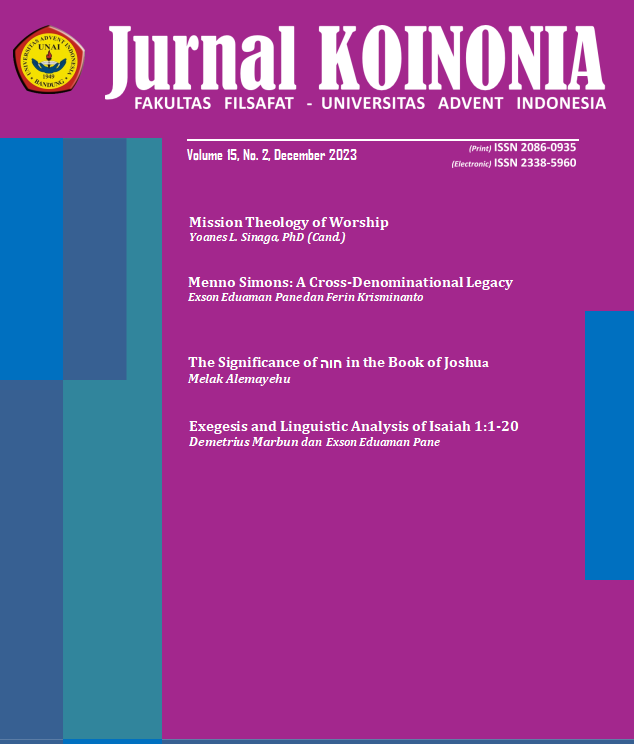The Understanding of Body and Soul in Matthew 10:28 espoused by Seventh-day Adventist Church
Keywords:
Body, Soul, Mission, Fear, PowerAbstract
The body/soul contrast has been a hot topic of discussion. Matthew 10:28 is one of those biblical text that talks about body and soul, though not in an extensive manner. From the text, it seemed like Jesus understood that body and soul can be destroyed separately. Does this mean that body and soul are two separate and independent entities? The Seventh-day Adventists believe that there is no immortal and separate entity, called soul, living within the physical human body. It is more fitting to say that a human being is a living soul rather than to say that he has a soul. The purpose of this study is to bring harmony between Jesus’ saying in Matthew 10:28 with the teachings of the Seventh-day Adventists regarding body and soul. A review on the word “body” and “soul” and also a review on the context were conducted to solve the problem of this study. In truth, Matthew chapter 10 is not a discourse on body and soul but rather a record of Jesus’ mission charge to the twelve disciples. Thus, verse 28 should be evaluated from the lenses of mission. The study has shown that the audience of Jesus could be the ones who possess that wrong concept of body and soul, whereas Jesus did not contradict the Seventh-day Adventist belief that states the soul is not an immortal, separate entity living within the body. The result of the study has shown that the Seventh-day Adventist’s belief regarding body and soul is valid. In this particular text, Jesus is using a common concept to point to the truth that God is more powerful than human oppositions.
References
Adventist Review. “Raoul Dederen, 91, longtime Seminary professor and dean, passes to his rest.” Adventist Review. https://adventistreview.org/news/raoul-dederen-passes-to-his-rest/ (accessed April 17, 2022).
Boudry, Maarten. “Human intelligence: have we reached the limit of knowledge?.” The Conversation. https://theconversation.com/human-intelligence-have-we-reached-the-limit-of-knowledge-124819 (accessed April 7, 2022).
Clarke, Howard. The Gospel of Matthew and Its Readers: A Historical Introduction to the First Gospel. Bloomington, Indiana: INDIANA University Press, 2003.
Concordance, Englishman’s. “ψυχὴν.” Bible Hub.https://biblehub.com/greek/psuche_n_5590.htm (accessed April 17, 2022).
Concordance, Englishman’s. “σῶμά.” Bible Hub.https://biblehub.com/greek/so_ma_4983.htm (accessed April 16, 2022).
Cousland, J.R.C.. The Crowds in The Gospel of Matthew. Leiden, Netherlands: Brill, 2002.
Dederen, Raoul, ed. Handbook of Seventh-day Adventist Theology: Commentary Reference Series Volume 12. Hagerstown: Review and Herald Publishing Association, 2000.
Douglass, Herbert E.. Seventh-day Adventists Answer Questions on Doctrine: An Explanation of Certain Major Aspects of Seventh-day Adventist Belief. Washington, D.C: Review and Herald Publishing Association, 1957.
France, R. T.. The New International Commentary on The New Testament: The Gospel of Matthew. Michigan, Grand Rapids: William B. Eerdmans Publishing Company, 2007.
Hagner, Donald A.. The New Testament: A Historical and Theological Introduction. Michigan: Baker Academic, 2012.
Hagner, Donald A.. Word Biblical Commentary: Volume 33A Matthew 1-13. Dallas: Word Books Publisher, 1993.
Seventh-day Adventist Church. “Death, the State of the Dead, and Resurrection.” What Really Happens When We Die?. https://www.adventist.org/death-and resurrection/#meaning (accessed March 30, 2022).




